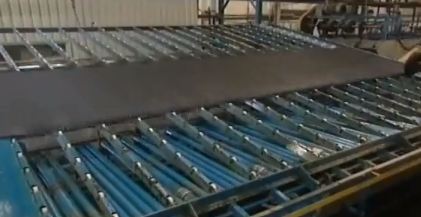Building rubber mats is beneficial for the environment due to the number of used tires that are recycled during the process. This factory can recycle up to 15,000 tires each day.
Large piles of used tires are delivered to a washing station in the factory to knock excess dirt and grime from the tires. Large grinding wheels chop the tires into small bits of rubber, metal, nylon, and fiberglass. As the rubber chunks flow along a conveyor, the metal is separated and delivered to a separate warehouse to be recycled. Next, other materials such as nylon and fiberglass are sifted from the rubber chunks to be disposed of. The large rubber chunks are then dumped into piles.
A loader then scoops up large chunks of rubber and drops the load into another shredder. This machine grinds the rubber chunks to even smaller rubber pieces, almost to a powder. The rubber powder is spread onto rubber mat molds. Then, the mat press cooks the mat at a very high pressure to allow the rubber to bond. Water is then poured on the mat for several minutes to cool mats. The rubber mats are then sent on their way down the line to dry and be cut into the correct dimensions for warehouse use.
Mud guards and rubber rings are also created in this warehouse using the same process. At least 12,000 rubber mats are made each day using this process. Think of all that recycled rubber!
That’s all there is to it! Be sure to stop by often for more material handling equipment news and showcases!

